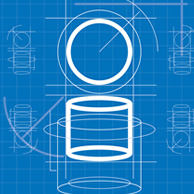
Many products do not qualify for patent protection because they do not possess the necessary technical innovation. Design protection may be the best way to safeguard them. Suitable designs can be registered.
A registered design protects the appearance of an article. It may relate to three-dimensional features – such as the new shape of a kettle or telephone – or two-dimensional features such as a rug pattern, wallpaper or playing card design. The owner of a registered design generally has the right to prevent others from manufacturing or selling products which incorporate that design. A registered design can be sold or it can be used to generate royalty income by licensing. Registered designs can be used alongside patents to provide complementary protection. A registered design can typically be kept in force for up to 25 years, providing you continue to pay renewal fees.
First steps
You will need to convey to us the exact appearance of the design, by providing either a sample, photos or drawings. We will use this information to prepare formal drawings which comply with official requirements and show the design from different angles. Knowing what to put into these drawings – and in some cases what to leave out – can often be a challenge, as can knowing if multiple applications are required. We will use our experience and knowledge in this area to make sure the appropriate steps are taken.
The process
We will prepare an application for registration and file it with the relevant Government body. We will be your agent and handle all correspondence on your behalf. The application is examined for compliance with formal requirements and if everything is in order the design will be registered.
Registered designs are country-specific. So, unless your design is protected in other countries, you may not be able to prevent competitors from exploiting your design in those countries. We can advise you on, and implement, the most appropriate filing programme abroad.
Ideally you should apply for registration before your design is disclosed to the public, but even if the design has been disclosed, valid registered design protection may still be obtainable in some territories. This “grace period” only applies to the 12 months immediately following first disclosure of the design.
Timescales and costs
Registered designs can be obtained fairly quickly – often within a month – and at low cost. For example, a registered design in the UK can be obtained for around £350 (excl. VAT) in a straightforward case. Obtaining equivalent protection abroad can also be achieved reasonably cheaply. Typical filing costs might be in the region of £700 to £900 per country.



